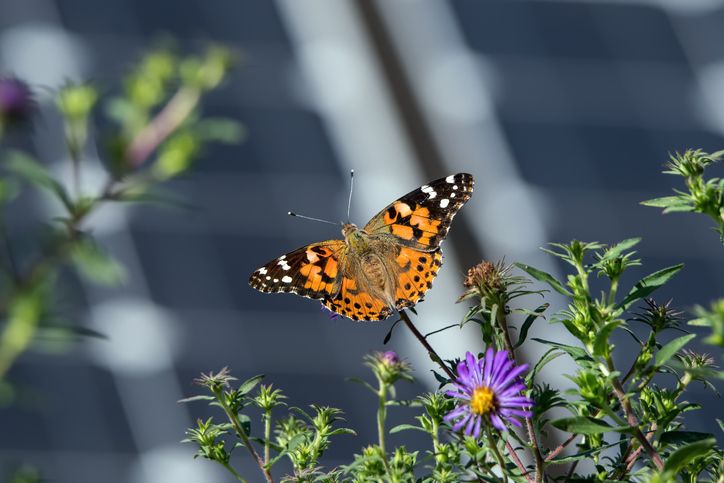Solar parks are an important part of the energy transition. When providing land, more and more municipalities are demanding commitments to ecological upgrading of the land. "This is where the interests of operators and municipalities fit together perfectly", says Markus W. Voigt, CEO of aream Group. "Because impact investors often look for the ecological added value in addition to the contribution to CO2-avoidance."
Open-space photovoltaic systems make an important contribution to climate protection, but are also quite controversial. In addition to the encroachment on the landscape, the sealing and separation of areas is criticized. "In the early years, solar farms were indeed often planned on the basis of generating as much output as possible", says Voigt. "But now, planning is often done in coordination with nature and wildlife conservation groups, and the parks become high-quality retreats for plants and animals."
As a result, nature conservation groups from Nabu to the hunting association are unanimous in calling for the areas to be upgraded. "The goal is a holistic planning approach that incorporates ecological interests as early as the site selection stage and takes them into account in all phases - from construction and connection to the grid to operation and dismantling", says Voigt, who sees the development of such guidelines in a positive light: "As a result, the plants can be seen as impact investments beyond clean energy generation."
Even during the planning phase, it is possible to develop a park concept with only very low additional costs that is not only compatible with nature, but even offers significant added value: Intensively used areas can be turned into areas that are managed gently, where no pesticides or fertilizers are used and many animal and plant species can settle. The Schleswig-Holstein Hunting Association, for example, advises that the total built-up area of a solar park should not exceed 70 percent, farm roads should be graveled instead of asphalted, and bodies of water and grazing zones should be created.
Nabu has also established criteria for ecologically valuable solar parks. It also addresses the deconstruction of the parks. "Here we are approaching a tension that is not so easy to overcome", Voigt says. The parks are planned to last 20 or 25 years. After that, deconstruction is theoretically very easy because the materials used are durable and could be easily removed. "The problem for the landowner comes from the enhancement of the area through conservation", Voigt says. Some landowners are afraid they won't be able to use their land as they did before, once valuable biotopes have been created here.
"That's a point that's hard to invalidate from today's perspective", Voigt says. "After all, areas of great biodiversity are actually being created here that should be preserved in the future." But such issues can be resolved with contracts as early as the permitting process. "And of course, it's always better to take an area out of intensive management for 20 years and allow it to recover, even if it's used for agricultural production again after that", Voigt says. "But transferring it to contract conservation is also possible - if the owner is compensated accordingly."
PRESSEKONTAKT:
Leandra Kiebach
T: +49 (0)211 30 20 60 4-2
E: lk@aream.de

